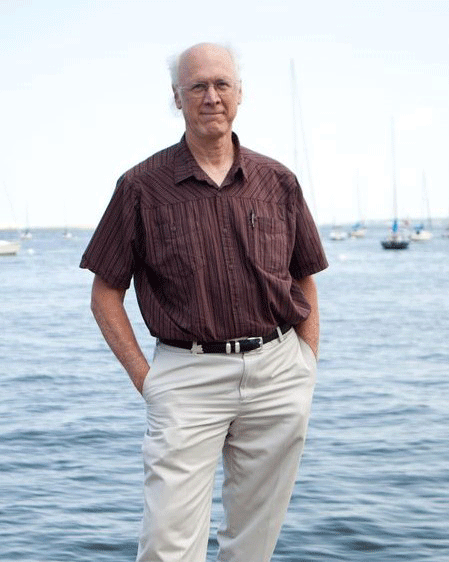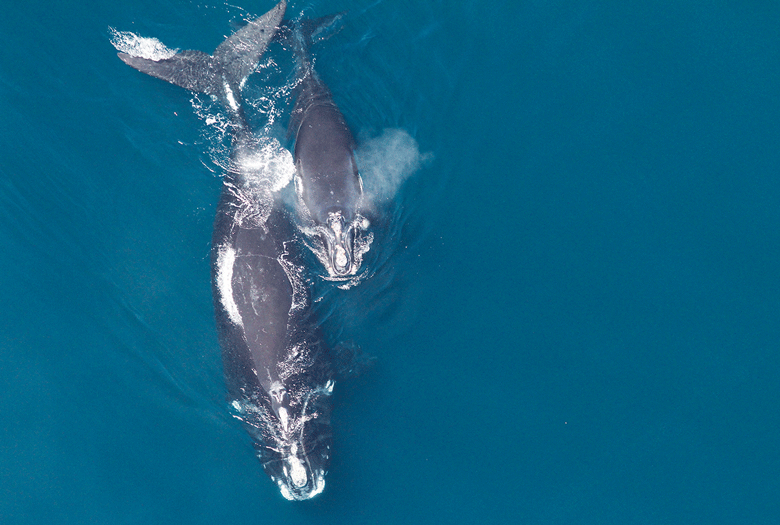Lobster fishermen continue to grapple with what they say are the cascading consequences of new rules designed to protect the endangered North Atlantic right whale which affect how and where they fish.
“It’s this dark cloud looming over us. One court decision could shut the entire lobster fishery down,” said Freeport lobsterman Andrew Spalding.
Spalding in July joined Genevieve McDonald, a commercial fisherman and legislator from Stonington, and Scott Kraus, chairman of the North Atlantic Right Whale Consortium, to discuss the topic, “The North Atlantic Right Whale: Balancing Conservation and Commerce” during a talk hosted by College of the Atlantic in Bar Harbor. Journalist Fred Bever moderated the session.
The right whale population has been in trouble throughout the 20th century, declining to perhaps 100 individuals by mid-century due to global whaling. By 2010, the population was nearly 480 and appeared to be slowly recovering. But a dramatic shift occurred in recent years; the population today is fewer than 400. Regulators consider fixed fishing gear entanglements and ship strikes to be primary culprits in the decline.

Since the 1990s, regulators have instituted restrictions in an effort to make it less likely that whales will encounter gear or, if they do, to make it possible for the animals to break free. Strategies include swapping out floating groundlines—the rope that connects traps when they’re on the sea floor—for “sinking” lines that won’t float up; installing “weak” points in the vertical lines that connect traps to surface buoys; and closing fishing areas during whale migrations. The federal government seeks to reduce the risk of entanglement by 98 percent in the coming decade.
The changes have resulted in costly problems for an industry proud of its conservation ethos and unlikely to encounter the endangered species, Spalding said.
Sinking lines scraping against the rocky bottom wear out quickly, he said. Reducing the number of vertical lines has meant “trawling up”—connecting more traps together on the bottom. Trawling up makes the hauling process much heavier, while weak points make it more likely that rope will break, leaving behind “ghost gear” that trap lobster for no purpose.
“You want strong lines to pull up your gear,” he said. “Now it has a weak link. That causes concerns among fishermen as to how dangerous that can be.”
Spalding noted he had a string of traps break that morning.
“It gets expensive, when a new trap goes for over $200 each now,” he said. “You have ten on a string, it starts to really add up.”
McDonald said regulators haven’t done enough to figure out where whales get entangled. A system that color codes gear with certain markings, depending on their area of origin, aims to fix that situation, but a Maine-specific color code came into play only this year.
“As a lobsterman, it’s imperative to know where the entanglements are,” said McDonald. “We’re looking down the barrel of sweeping changes.”
Kraus said the number of entanglements is probably far larger than those actually observed. And, he said, it’s not clear whether protection measures had anything to do with past population increases.
Ideas were implemented “that were never experimentally tested. Everyone was guessing—fishermen, scientists, agency members alike,” he said.
McDonald called the 98-percent risk reduction target “a death knell” for the industry—not only for fishermen but for fishery infrastructure businesses.

“We need to stop working in unknowns and start working on what we know,” she said. “We need that data on where the whales are.”
Kraus said researchers have tried to tag right whales in the past.
“Right whales are very grumpy about being tagged” and consistently scrape them off, he said.
Even if tags can be made to last, tracking whale locations won’t necessarily solve entanglements.
“Guys can’t pull their gear out in a day,” he said.
Regulations are less draconian for fishermen in state waters within three miles of shore. But offshore rules could affect the entire fishery, said McDonald. Offshore fishermen could start trapping inshore, resulting in crowded conditions. The fleet could consolidate, excluding traditional small day boats.
“How far can we push a fishery based on speculation and unknowns?” she said.





